Day 15 – 19: Change of course
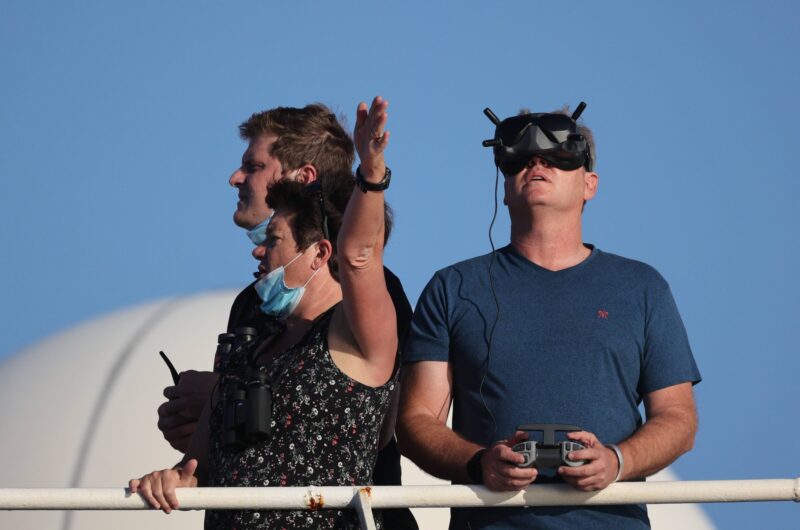
4-8 May 2022 | off Durban, South Africa
Eugénie Dufour, Salomé Pellé and Luis Chomienne
On a scientific mission, the unexpected is part of the routine. First of all, the eddy that we were trying to sample off Durban was lost, then recovered after a few hours of prospecting with the help of the MVP (Moving Vertical Profiler) which continuously analyzes the first 300 meters of the water column. However, once the eddy was found, the intensive sampling planned could not be carried out: despite the precautions taken before departure and during the first weeks on the boat, cases of Covid 19 occurred on board. The captain’s announcement (“Your attention please, your attention please”) resounded in the dining room and marked the beginning of a whole new adventure.
At that time, two sailors and three members of the scientific team had tested positive for Covid. A complete screening was then conducted on the whole crew, science team and students. The cases multiplied on board, and after some discussions as to the procedure to adopt, the people having contracted Covid as well as their roommates, considered as contact cases, were isolated in cabins. The wearing of masks for all has been reinstated, the bar closed.
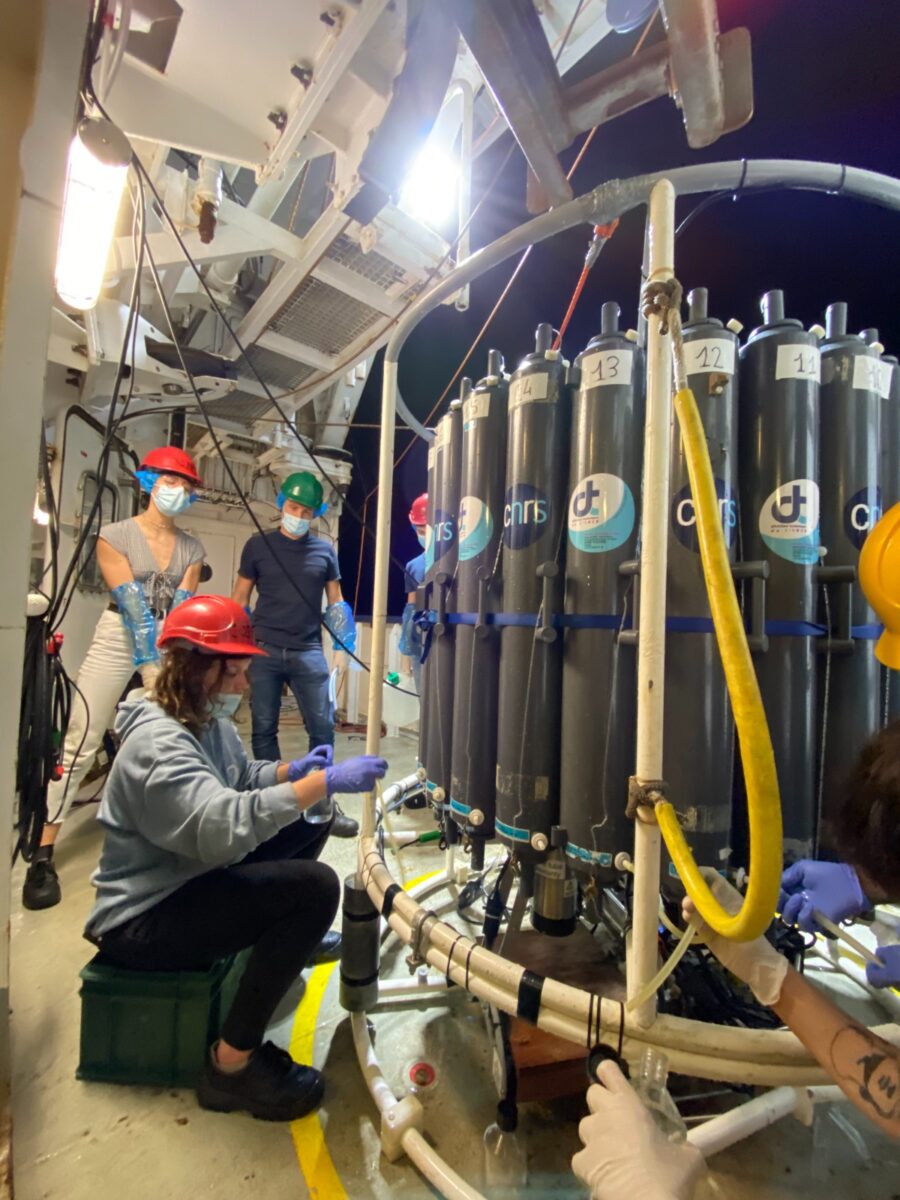
In this situation, morale is impacted and tasks pile up on those still available. Nevertheless, everyone does their best to carry out the scientific mission. Students are becoming indispensable to replace the vacant positions in the scientific teams. As an example, the water collections around the CTD/rosette are now entirely done by the students for the whole scientific team, with their supervisors Sara and Christophe as scribes (the conductor around the CTD).
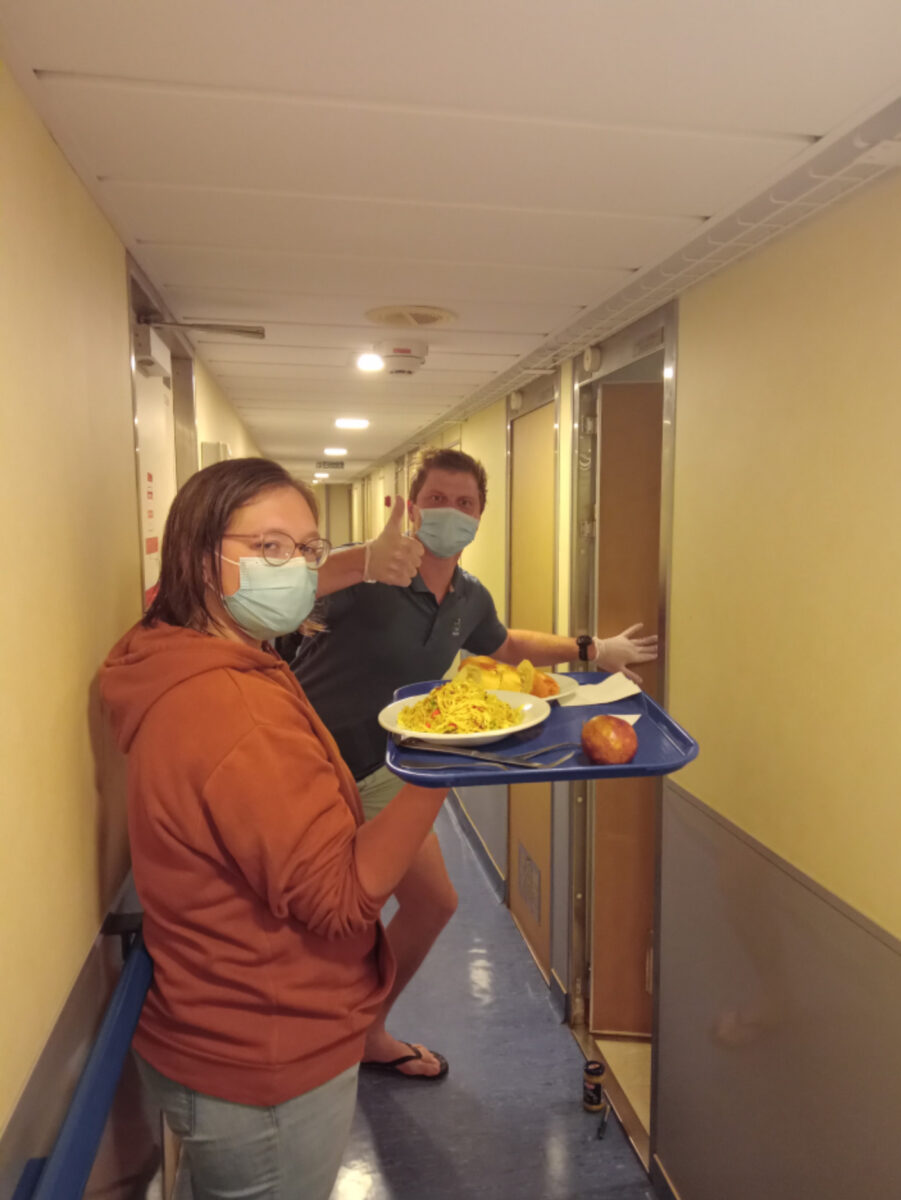
The students and scientists also assist the crew in distributing food, beverages, and maintaining a coffee corner set up in the helicopter’s takeoff area, commonly known as the “DZ” (Drop Zone).
This space is now reserved for the confined persons for the rare authorized outings: 2 outings of 30 minutes per day, programmed on different time slots from morning to late afternoon. Thus, for the distribution of tasks during the daily meeting of the floating University, in addition to the roles associated with the scientific posts (commonly called on board “PI”, for Principal Investigator), a new post has been opened: the “PI café”. The person in charge of this role is responsible for setting up and supplying the coffee and cake corner installed on the DZ. The goal of each person is to provide moral support to people who are confined, sometimes in groups, in small spaces. Others create artistic decorations and write messages to the crew and the confined scientists.
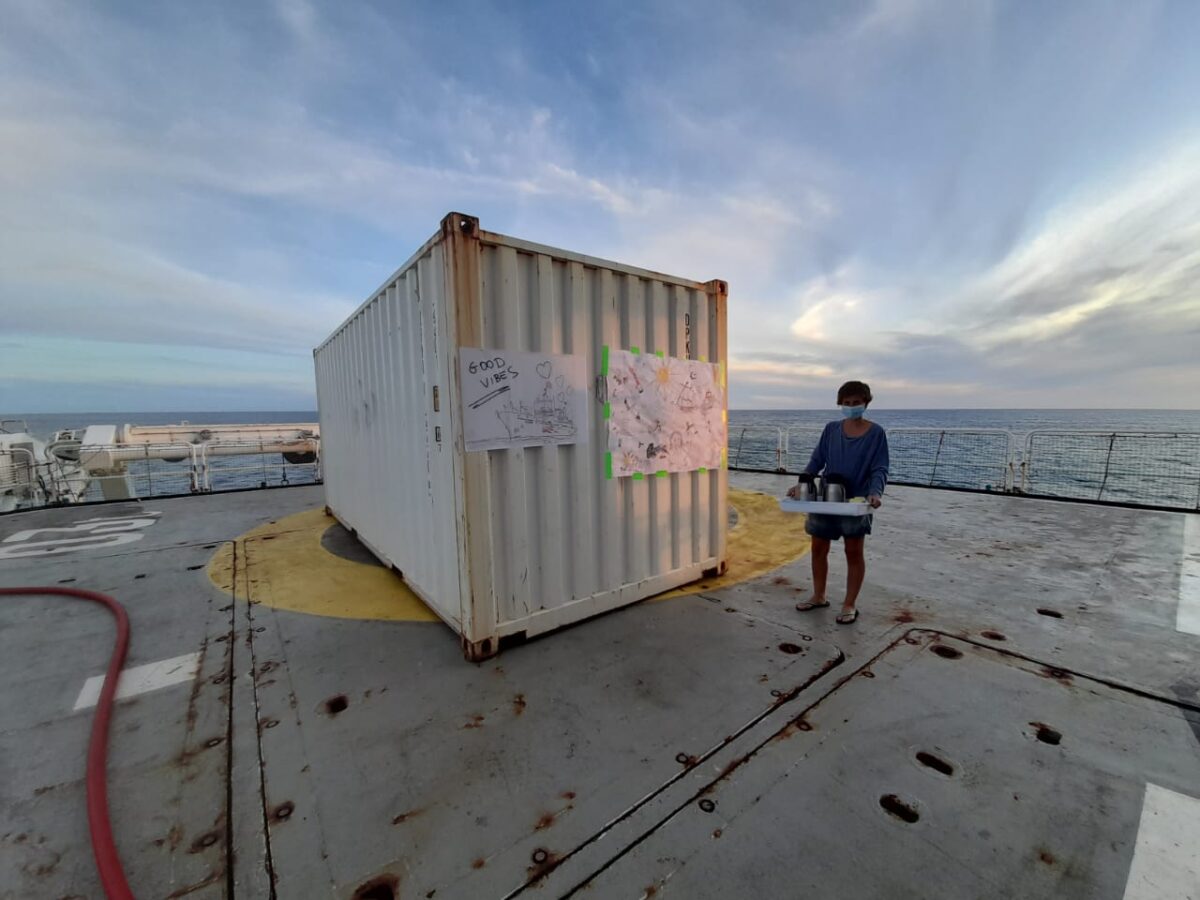
Among the initiatives put in place, a “Time tracking of happiness on the boat” is carried out daily. The principle? Declare your level of happiness at different key dates on the boat (embarkation, karaoke evening, Covid announcement, strict confinement of the sick…) in order to follow its evolution individually and collectively. To be followed!
In spite of the evolution of the covid situation on board, Lucas’ birthday was celebrated, with Felipe and Jordan’s double guitar, Angèle’s violin and Guillaume and Felipe’s choir, a moment of beautiful union which will remain in the heart of the boat. But there was no party afterwards because of the conditions.
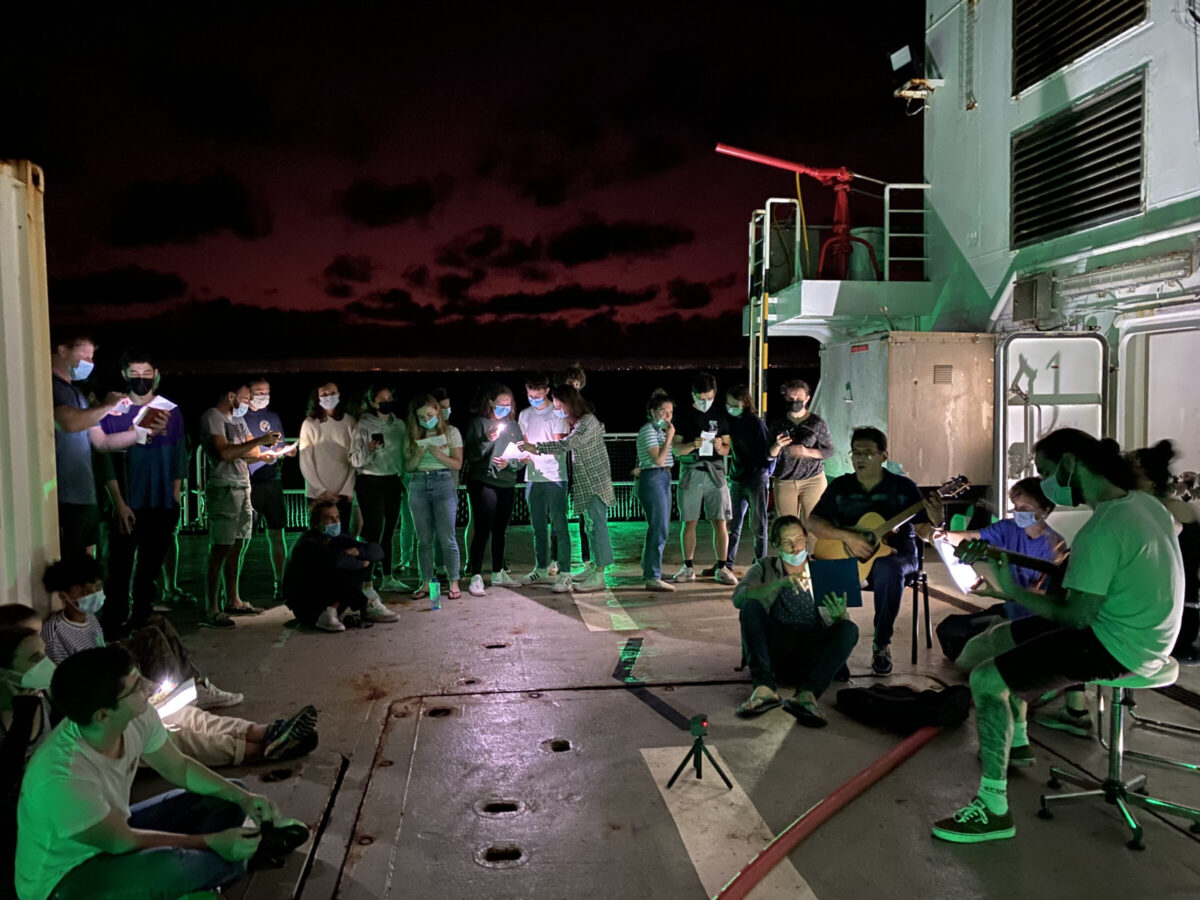
During this time, some students remained in observation, too anxious not to miss some marine mammals: indeed, off the coast of South Africa, the waters are richer because of hydrodynamic movements and many species were then observed. Among them, Risso’s dolphins, pilot whales and a sperm whale in the distance. Schools of fish were also observed surfing in the waves of the ship, giving rise to magnificent choreographies of colored scales dancing in the waves.
But this biological richness linked to the presence of the coasts is also accompanied by the anthropic remains of our development, and the observations of macro-plastics multiply…
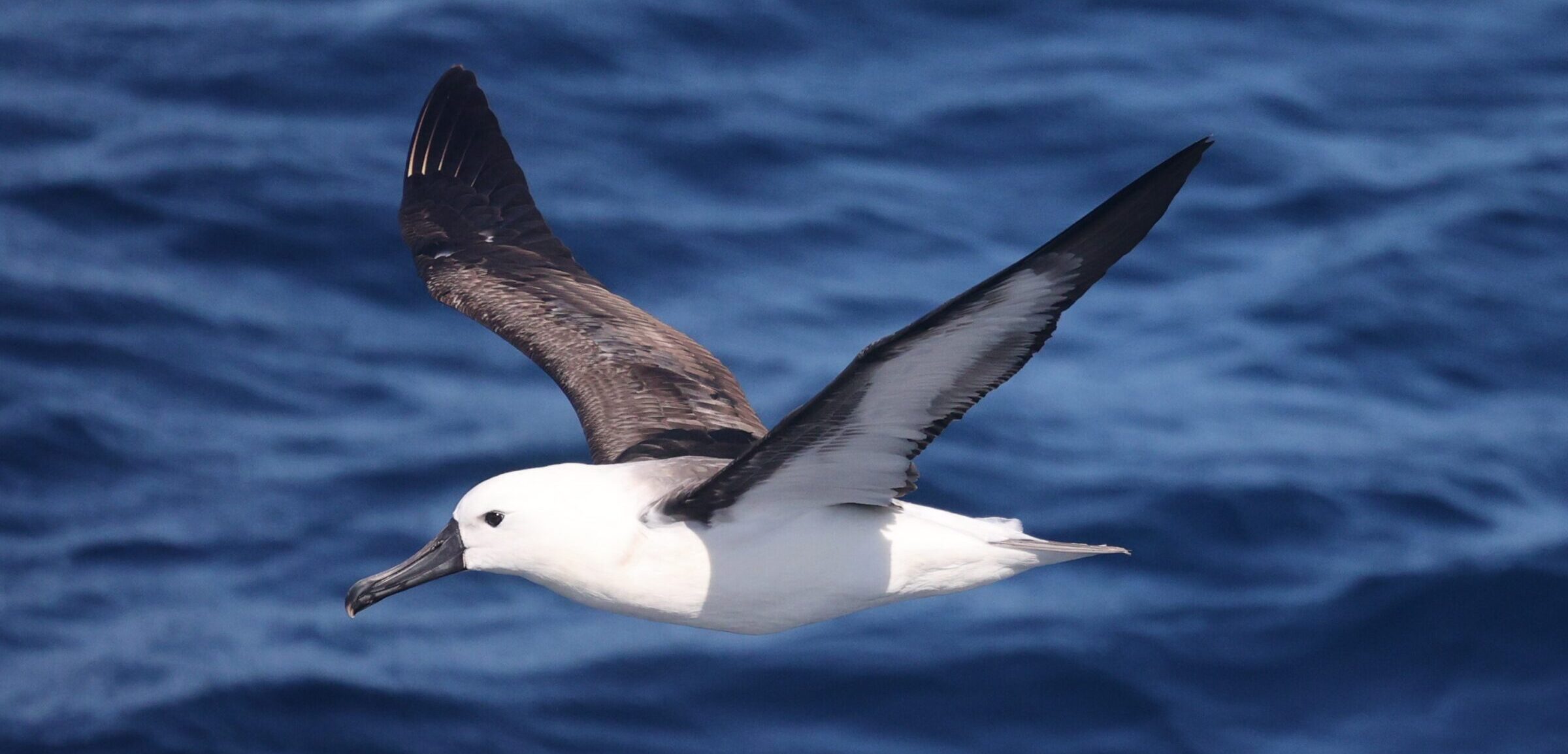
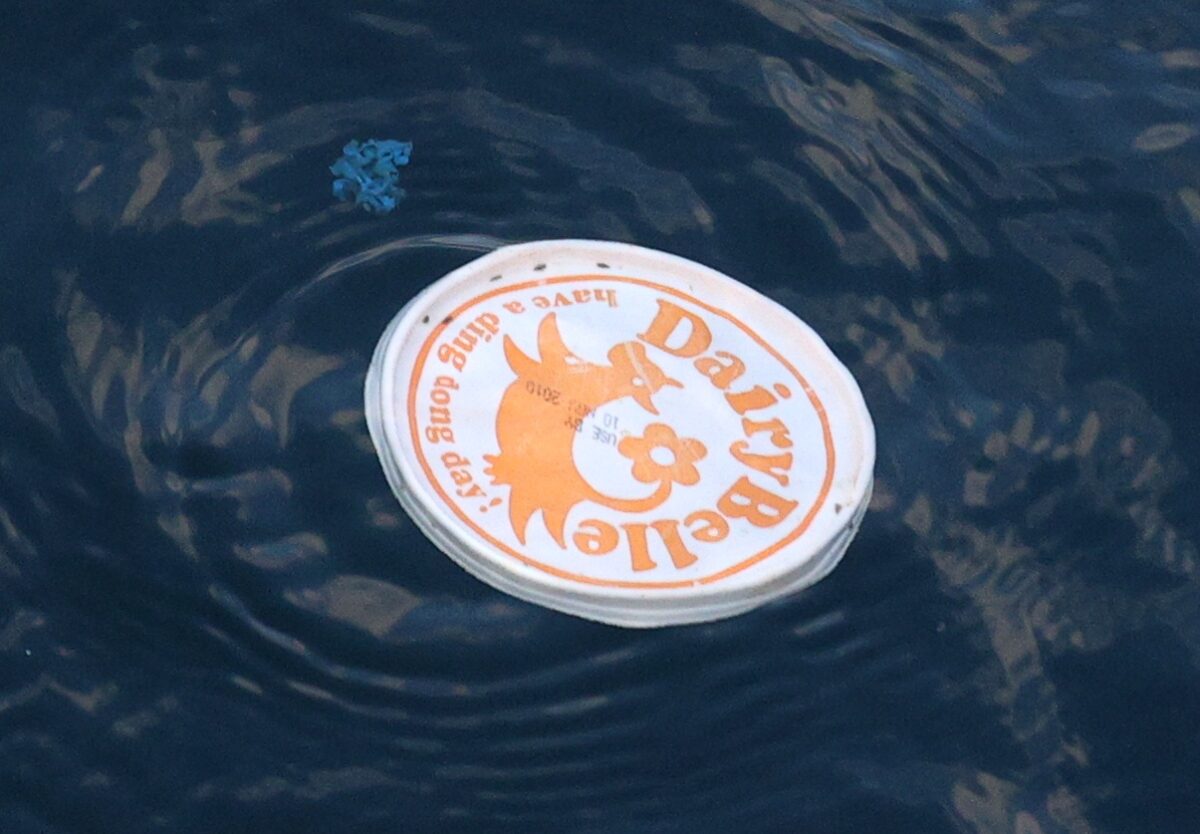
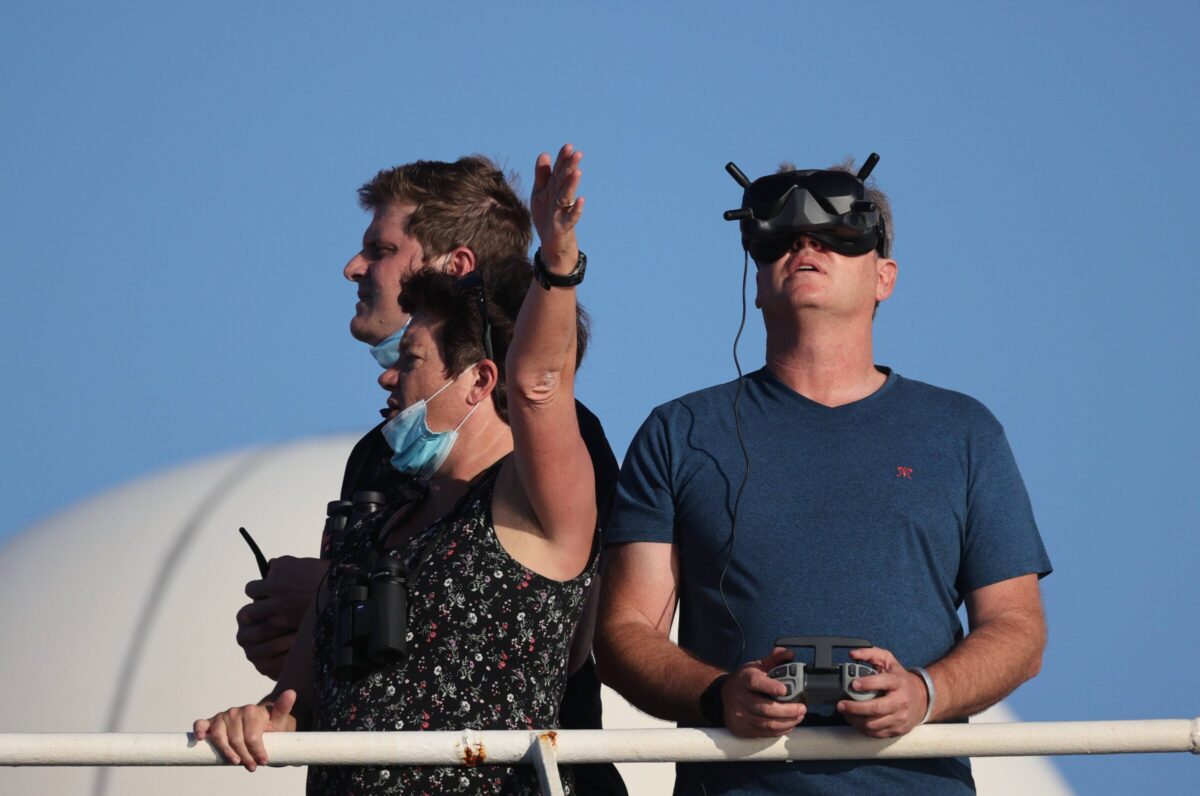
Scientific conferences continue on board, with a double focus on barrier gestures (an empty seat is left between each seat). Mandy Lombard gave a first lecture on the establishment of marine protected areas, linking many social, economic and ecological parameters, a lecture that will lead to a future meeting.
Finally, the eddy we had set our sights on is on the decline, dislocated by the powerful Agulhas current. This is not such bad news for our scientists, this phenomenon being also very interesting in terms of physical oceanography. So we have officially reached half of the objectives of the initial mission, but still no party.
Due to the lack of available personnel, some stations on the rosette have had to be abandoned, and some instruments cannot be used. In addition, the rosette winch needs to be repaired, as does the MVP winch. Nevertheless, surface sampling during transits is going well, and the scan-fish has joined the list of instruments used on board and is flown permanently, sometimes by the students. It will replace the MVP until a solution is found. The scan-fish continuously samples the surface layer of the water column (but not as deep as the MVP) and measures various parameters (temperature, salinity, fluorescence and also some nutrients!).
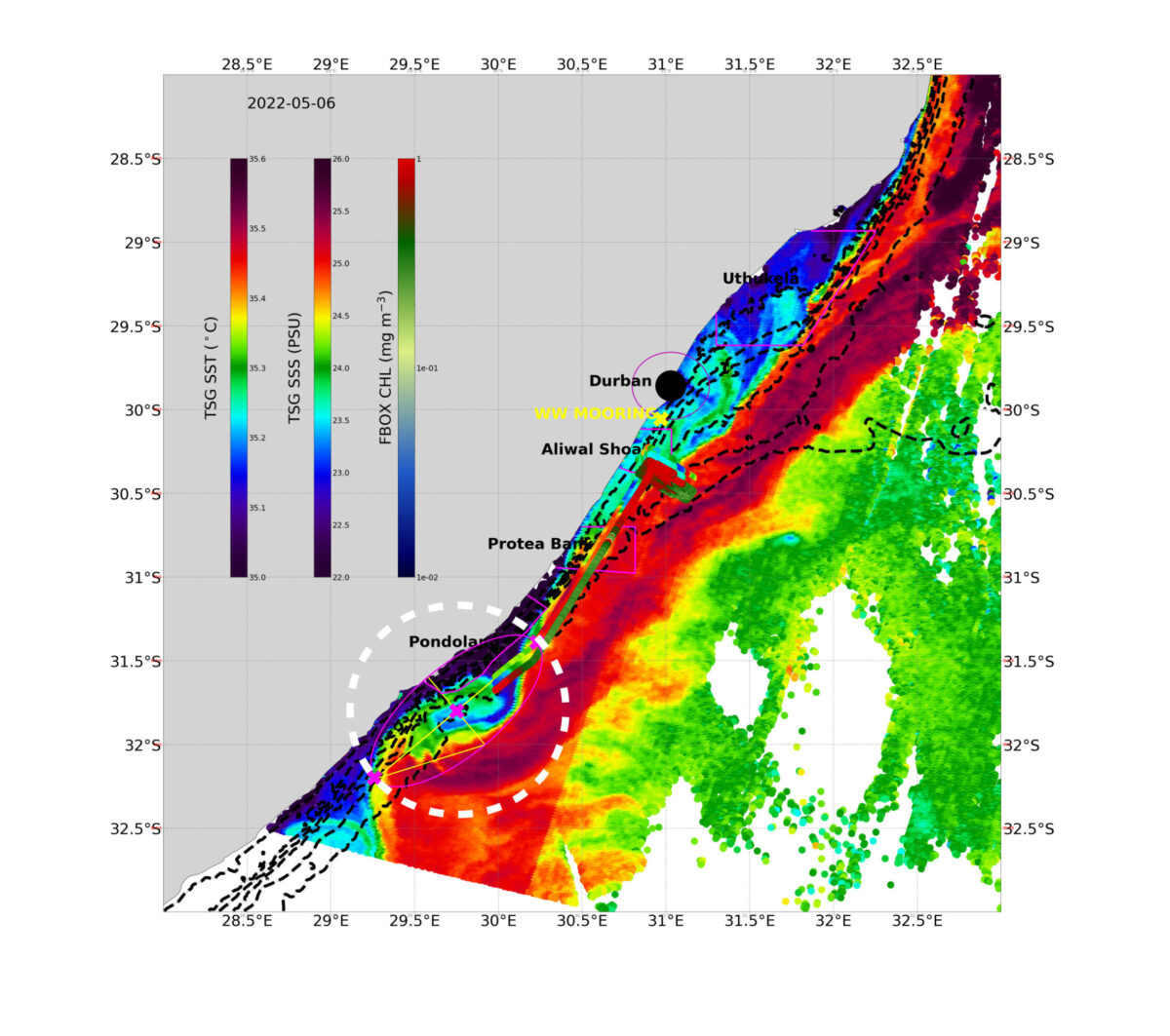
Faced with the disappearance of our subject of study, a third Leg will be set up on a very beautiful eddy located further south. We will reach it by taking the famous Agulhas Current, which will be our highway, like Nemo’s turtles with the East Australian Current!
In parallel, the results of the previous experiments are beginning to be revealed: the drifters, geolocated buoys drifting with the currents, have shown very satisfactory results: the divergence of the water masses and the rotational movements in the two eddies, the anticyclonic and the cyclonic (see Why and what is Leg 1? to have more information on the structures studied during the Leg 1) And the XBTs (torpedoes measuring temperature and pressure) launched by the students are studied by Guerric who takes care of the image processing of the results!

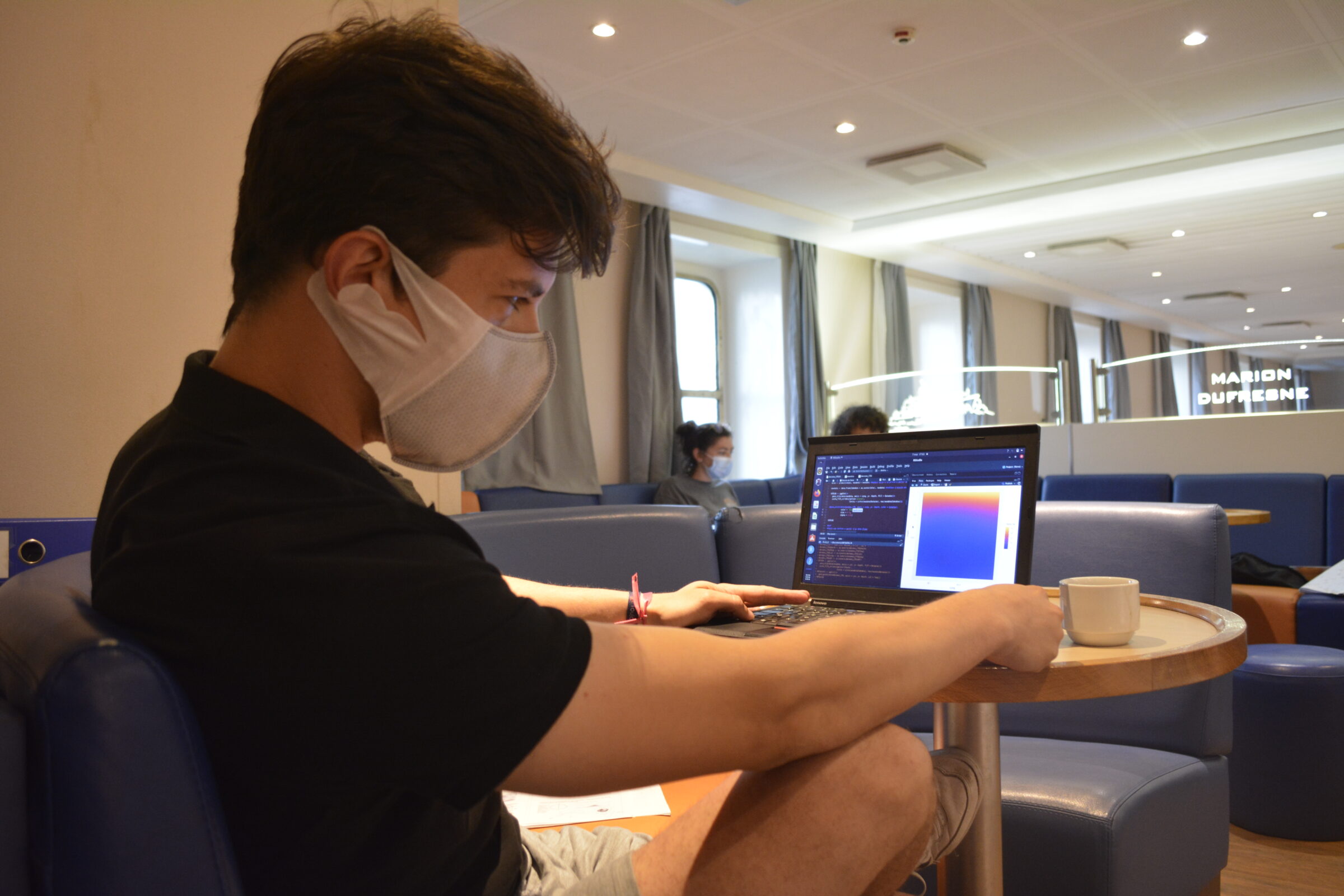
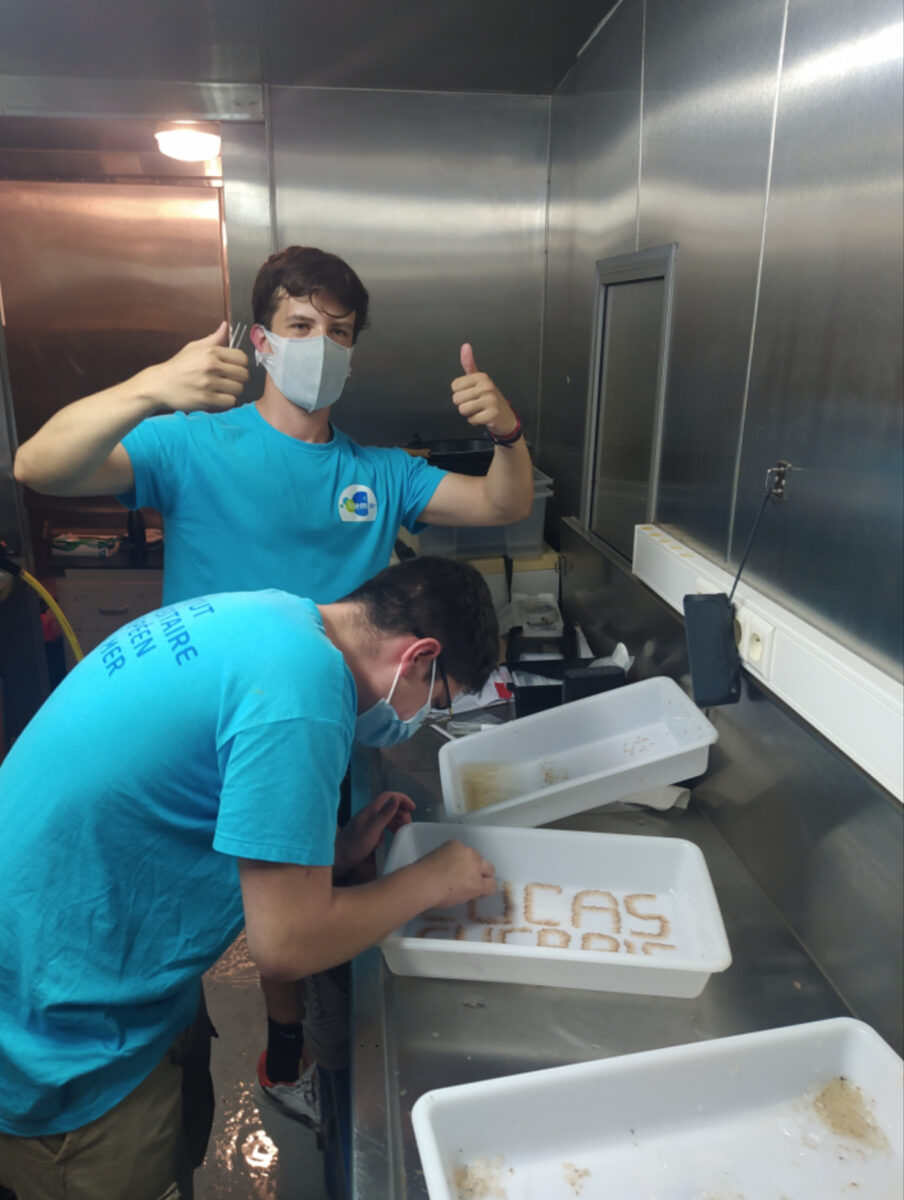
On the biological side, the trawling record was broken with 1.1 kg of organisms hauled up on the last evening (spoiler: we’ll have more after), composed mainly of gelatinous species, crustacean larvae, leptocephalus larvae (anguilliformes), krill and only 5g of small fish, including flatfish. These data will be correlated with acoustic measurements to identify organisms previously observed via their acoustic signals.
 Attention, vous utilisez un navigateur peu sûr !
Attention, vous utilisez un navigateur peu sûr !